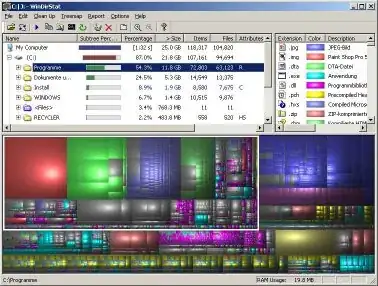Original Answer (See the section below for a more comprehensive solution.)
You have Windows Task Manager, which is built into Microsoft Windows itself.
![[MediaWiki screenshot of Windows Task Manager]](../../images/59d93be4d420d4585ad2b78214bb1aeb.webp)
From Wikipedia, the article Windows Task Manager (edit 19:04, 17 September 2012):
Windows Task Manager is a task manager application included with the Microsoft Windows NT family of operating systems that provides detailed information about computer performance and running applications, processes and CPU usage, commit charge and memory information, network activity and statistics, logged-in users, and system services. The Task Manager can also be used to set process priorities, processor affinity, forcibly terminate processes, and shut down, restart, hibernate or log off from Windows.
Alternative Answer (requested by OP)
Process Explorer is like Windows Task Manager, but it has more features. Since you are looking for "a more detailed view", consider Process Explorer.
You can download it by clicking here.
![[MediaWiki screenshot of Process Explorer]](../../images/5905231ed26475b9da802f03a2d7c176.webp)
From Wikipedia, the article Process Explorer (edit 21:39, 4 October 2012):
Process Explorer is a system monitoring and examination utility. It provides the functionality of Windows Task Manager along with a rich set of features for collecting information about processes running on the user's system. It can be used as the first step in debugging software or system problems.

![[MediaWiki screenshot of Windows Task Manager]](../../images/59d93be4d420d4585ad2b78214bb1aeb.webp)
![[MediaWiki screenshot of Process Explorer]](../../images/5905231ed26475b9da802f03a2d7c176.webp)